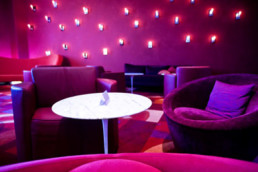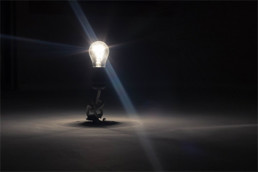Can Colored Light Affect Our Mind and Body?
In a previous blog post, we explored the impact that blue and red lights have on our sleep patterns. Although blue light tends to disrupt our sleep while red light allows us to sleep more deeply and restfully, these effects seem contrary to how these light types influence us physically and psychologically. According to a color science professor at the University of Leeds, blue light actually decreases heartrate and has a calming effect, while red light increases heartrate.
This physiological change can be attributed to the hypothalamus, a part of the brain that secretes the hormones responsible for our body’s temperature, sleep patterns, and hunger, among other things. When light enters our eyes, retinal ganglion cells send signals to the hypothalamus to secrete these hormones, and the amount it secretes is dependent upon the color of the light.
Due to the calming effect of blue light, there’s reason to believe that it can also make people less impulsive. Back in 2009, blue lights were installed in some Tokyo trains stations in an attempt to reduce incidences of suicide. Although there is little scientific evidence to support the claim that blue lights specifically reduce impulsivity, suicides nonetheless fell by 74% in the Tokyo train platforms where these blue lights were installed. Inspired by these promising results, some British train stations subsequently installed similar blue lights.
To get these lights to radiate the most calming and effective shade of blue, highly accurate light and color measurement instruments such as those offered by Konica Minolta Sensing are essential. With an innovative luminance and color meter like the CS-150 or CS-160, analyzing light and color, meeting light standards, and maintaining consistency throughout an assembly line is simpler than ever before.










